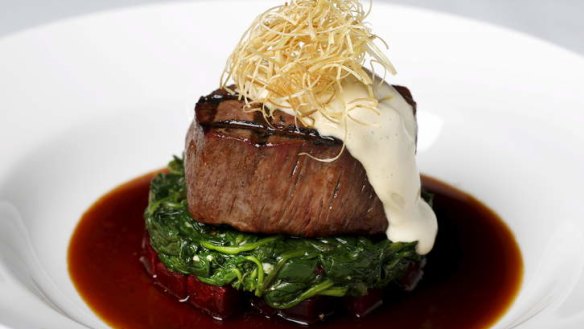Should I use cheap or expensive wine in my cooking?

Should I use cheap or expensive wine in my cooking? R. Parr
I did a little experiment at the weekend just for you. A mate of mine is a wine writer and he gave me what was left of a five-year-old $70 bottle of Barossa shiraz. I bought a decent $25 bottle of Coonawarra shiraz, the type that would be acceptable to bring to a middle-class dinner party. I then bought a bottle of shiraz for $3.99. I didn't know such things existed until now. With the three wines, I cooked three different versions of a chicken in red-wine braise: chicken, onion, carrot and celery, a few herbs. The version made with the $30 bottle was good, if I may be immodest. I was expecting the version made with the $70 to be much better, but it wasn't. A lot of the subtlety of the wine had been lost in the cooking. The dish made from the cheap wine was noticeably less agreeable and more acidic, and the wood tannins, derived from wood chips added to the wine for flavouring one could assume, were very rough. As a side experiment, I chopped some fatty smoky bacon and added it to the cheap version, which improved it noticeably - the fat helped ameliorate the rough tannins in the cheap wine. I think the adage ''use the best you can afford'' comes to mind here.
When I make gnocchi alla romana, the melted butter goes everywhere except on the gnocchi. G. Parker
Gnocchi is one of the first dishes I ever made. I was working at Channel Nine and the food in the canteen was notoriously bad. Maria, who worked on the till, was appalled and embarrassed at the gnocchi being served, so when I expressed an interest in how it was made, she offered to show me. She simmered whole potatoes in skins until just soft and placed them through a food ricer, not a masher. She added egg, flour and nutmeg when the potato was just warm. She hand-rolled them and shaped them with a fork. She dropped them into a pot of boiling water until they floated to the top, then placed them in a pan with butter and sage. She also made gnocchi alla romana by cooking semolina with milk and parmesan, which she made into a flat dough and cut flat rounds, which were brushed with melted butter, sprinkled with parmesan and baked. One little tip I learnt was to ditch the melted butter and simply grate the same amount of really cold butter over the gnocchi. It's a method I still prefer.
How do I stop fruit from sinking in my fruit cake? P. Findlayson
As the judges at one Country Women's Association cake competition cruelly said to one entrant with a layer of sultanas at the bottom of her Dundee cake, ''Good for home, not for show''. With fruit cakes, be careful not to beat the butter and sugar until light and fluffy, otherwise the batter will be too full of air to hold up the fruit. The butter and sugar should be just creamed. Some cooks dust their dried fruit in a little flour, which seems to keep them suspended in the batter.
I have too much pineapple. What should I do with it? S. Claxton
I am thinking toothpicks and sliding on slices of kabana sausage and cubes of cheese. Insert the other end of the toothpick into a Mexican sombrero-shaped wooden canape holder. Put some Barry White on the turntable and hit the shag pile. You can cut pineapple into rings, pack it in a large sterilised glass jar, cover it with a light sugar syrup (half part sugar to one part water, simmered), cover it with a lid, place the jars in a large saucepan covered with water, then bring to the simmer and allow to heat for 45 minutes. Tighten the lids and store in a cool, dark place. Pineapple has an enzyme called bromelain that tenderises meat, so you can add a little chopped pineapple to your marinade. We keep a resealable plastic bag of pineapple pieces in the freezer at home and drop these into the blender with some ice and yoghurt to make smoothies.
Send your queries to brainfood@richardcornish.com.au
The best recipes from Australia's leading chefs straight to your inbox.
Sign up- More:
- Brain food
